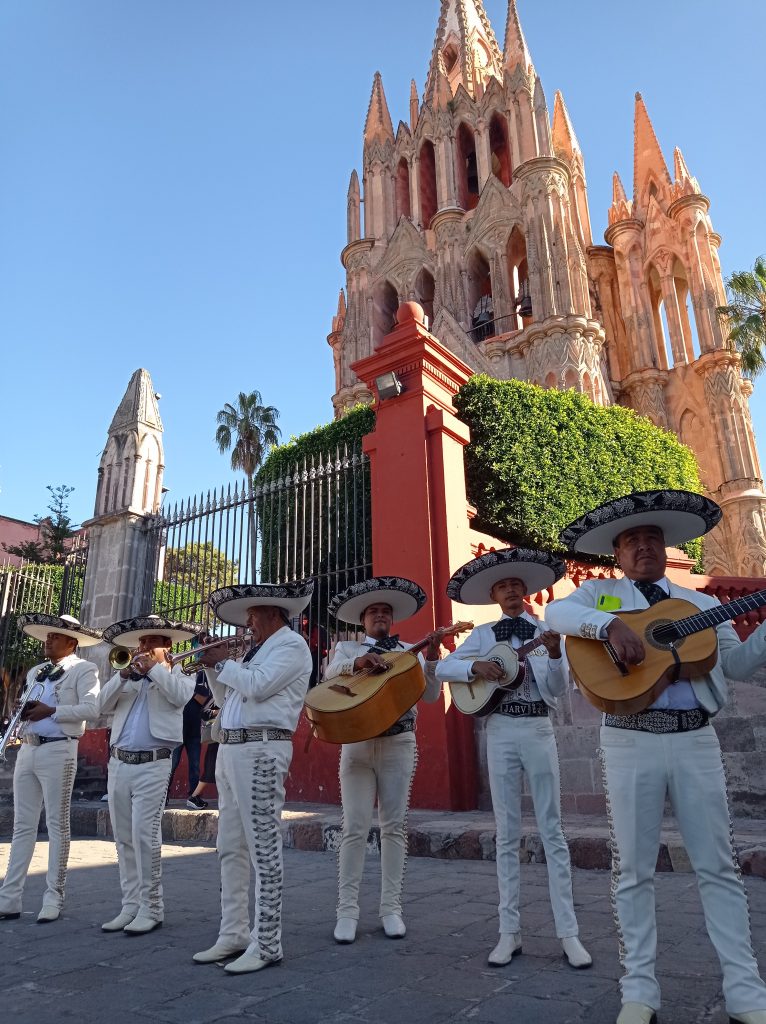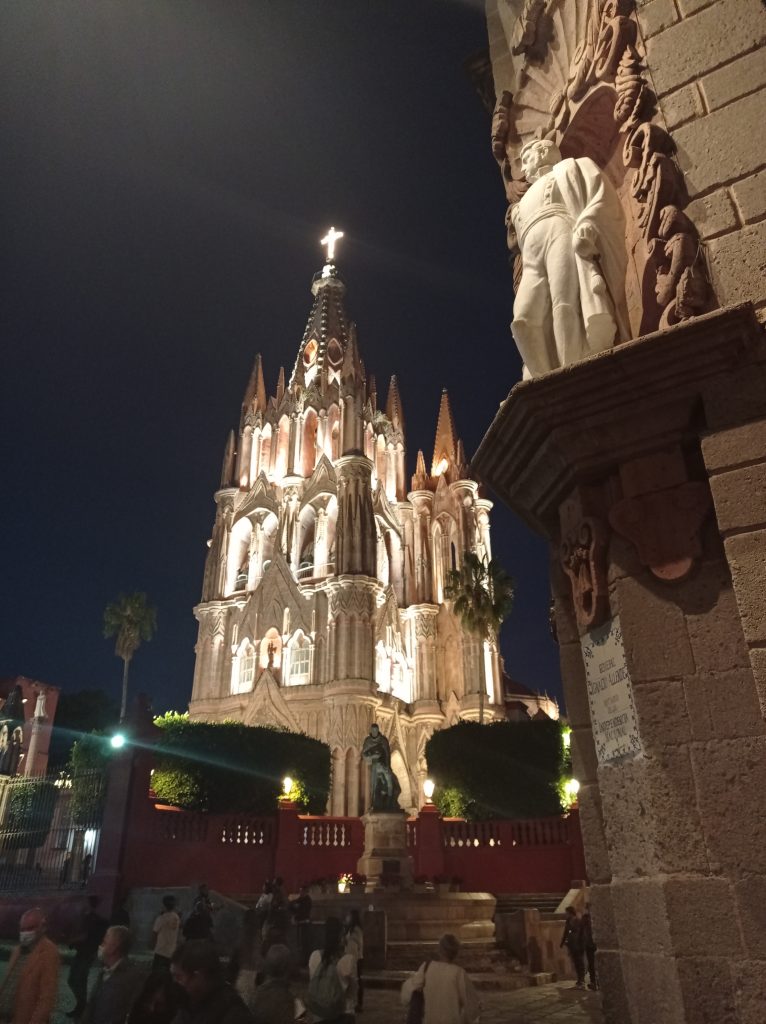By Fernanda Noriega
The parish of San Miguel Arcángel, located in the heart of San Miguel de Allende, has become a representative and unmistakable icon of the city. In any corner of the world, it is identified as a unique symbol of San Miguel, and there Is no resident or visitor who doesn’t notice it. To better understand its history, it is important to know that the parish church was built almost immediately after the founding of the town. The city was then San Miguel el Grande, and did not change its name to San Miguel de Allende until 1826. According to a document from 1649, the church of San Miguel el Grande collapsed due to great deterioration, and later, around 1680 to 1690 it was once again in ruins. An architectural project was launched to restore it, and was finished around 1709, but with a baroque-style appearance, totally different from the original façade or the Neo-Gothic style it has today.
We know that by 1683 the main body of the church had been completed, although a wall had deteriorated. Also, the tower and the altarpiece of the main altar were missing. The repair work was directed by the architect Marco Antonio Sobrarías according to the parameters, standards and style established at that time, which was baroque.
It was not until the decade between 1880 and 1890, that a master stonemason in the city, Don Zeferino Gutiérrez, built a new façade. This was done following one of the artistic styles of the time, and inspired by the great architectural gothic works of Medieval Europe. It was during this time that the two towers that had been built during the 17th and 18th centuries were replaced by the ones that we see today. The façade, the niches, the choir window, the atrium, the bell tower of the clock, and the interior altars were also transformed at this time. To honor the master stonemason responsible for this work, Zeferino Gutierrez Park in San Miguel is named after him. In addition, during festivities, such as the Day of the Dead, an altar is erected in his memory.
Some visitors wonder why the church is only a “parish,” and not a cathedral. The answer is that San Miguel de Allende does not have a resident bishop, which the Catholic Church requires for a cathedral, so to this day it remains simply a parish church. For many, this Neo-Gothic style typical of Europe never fully fit in with the colonial aesthetic that distinguishes the streets of the city. However, this particular church has endowed the city with a personality that it might not have obtained otherwise. Today, it is a true icon in this beautiful city and a World Heritage Site.






